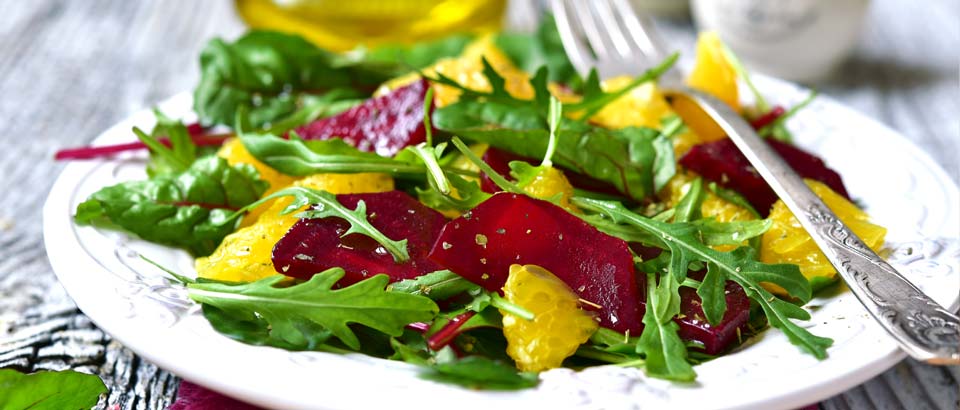July 18, 2022
Summer has arrived – which means fun in the sun and getting outdoors doing your favorite activities. But did you also know that it’s also a season filled with superfoods? Consuming the appropriate healthy snacks at the right time of the year can lead to an overall boost in immunity, physical and mental vigor, and digestion. Let’s dive in to five summer superfoods and meal prep ideas to keep you healthy this summer.
1. Blueberries
Blueberries may be tiny, but they are mighty! They can be picked fresh from the patch from May through October, and they are a great alternative to a sugary snack. They are one of the only blue foods that are loaded with antioxidants that fight inflammation.1 Blueberries get their vivid color from anthocyanins, the natural plant components responsible for the bright blue, and may also have anti-diabetic properties. They deliver a lot of flavor for only 80 calories per cup. These little berries are a great source of dietary fiber, which helps promote healthy digestion. They are also high in Vitamin C which is an antioxidant that aids in the body’s healing process and can help to boost your immunity.2 Manganese, a mineral that helps the body metabolize cholesterol and nutrients, is also abundant in the berries. A great treat to try this summer is frozen yogurt covered blueberries. Dip the blueberry in Greek yogurt of your choice and line them on a tray with parchment paper. Freeze for an hour and voila!
2. Watermelon
This summer picnic staple can help your body stay cool during the hot summer months. It’s accessible from April to November, with May to August being the prime season. Watermelon is 92 percent water, can keep you satisfied while consuming fewer calories. It also hydrates you which is important for maintaining a strong memory and boosting your mood. Aside from being refreshing, watermelon also contains lycopene which is a carotene and it can help cholesterol. It has the potential to be a powerful weapon against prehypertension, a risk factor for cardiovascular disease.3 If you are looking for a way to incorporate this into your next summer gathering, try this isn't complete watermelon-infused salsa. Among slices of classic components like red onion, peppers, and jalapenos, this fruity addition is a delightful complement. Here’s what you’ll need:
- 1/4 personal-sized, seedless watermelon
- 1/2 green bell pepper
- 1/2 orange bell pepper
- 1/2 cup chopped red onion
- 15 sprigs of cilantro
- 1 minced jalapeno
- Juice of 1 lime
- 1 teaspoon roasted cumin powder
- Salt to taste
Directions:
- Dice the watermelon, green and orange bell peppers small. Then chop up the cilantro.
- Put all the ingredients in a bowl and mix. Check for seasoning and adjust, if needed. Serve with chips or as a side salad.
3. Zucchini
Zucchini, often known as summer squash, is at its best when the weather warms up. The squash’s fiber content elevates it to superfood rank. Pectin, which makes up a portion of this fiber, may help keep blood sugar and insulin levels in check. To get an extra serving of vegetables, some nutritious summer dishes often use zoodles (zucchini noodles) instead of pasta. While zucchini is low in calories, it is high in nutrients such as vitamin C, folate, and potassium. Zoodles are an easy alternative that will soon become your summertime favorite when made alongside chicken or a tasty pesto. Roasted zucchini slices can also be used in place of noodles in a wonderful veggie-packed lasagna. To complete the meal, serve with a garden salad dressed in basil vinaigrette.
4. Tomatoes
The first line of defense against the hot summer sun should surely be sunscreen. However, consuming tomatoes, may provide further protection. Lycopene is abundant in very red tomatoes and offers a long list of health benefits, including sun protection, reduced vascular aging, and prevention of heart disease, stroke and memory loss. Lycopene in tomatoes becomes more accessible when cooked, allowing you to absorb more of this super-nutrient. Tomatoes also contain potassium, an electrolyte that can helps muscle contraction, heart function and water balance regulation.4 From late June to September, tomatoes are at their peak. If you want to enjoy tomatoes raw, try combining them with watermelon in a gorgeous (and gluten-free) salad.
You can also highlight the vibrant color of tomatoes by making this decision herbed tomato gratin. To get started gather the following:
- 3 tablespoons extra-virgin olive oil
- 4 cups crusty whole-grain bread cubes
- 1/3 cup heavy cream-1/2 cup finely shredded Pecorino Romano cheese
- 2 tablespoons chopped fresh marjoram (plus extra for garnish)
- 3 cloves of minced garlic
- 1 tablespoon sherry vinegar
- 1/2 teaspoon salt
- 1/2 teaspoon ground pepper
- 3 pounds medium heirloom tomatoes, sliced 1/4 inch thick
Directions:
- Preheat the oven to 400 degrees. Spray a 9-by-13-inch pan with cooking spray.
- In a large skillet, heat the oil over medium heat. Cook, stirring periodically, until the bread is brown and crispy, about 6 to 8 minutes.
- Place the bread in a large mixing bowl. Cream, 1/4 cup cheese, marjoram, garlic, vinegar, salt, and pepper are gently stirred in. Fill the baking dish halfway with the mixture. Sprinkle the remaining 1/4 cup cheese on top of the tomatoes.
- Bake the gratin for 40 to 45 minutes, or until golden and crispy on top. If desired, garnish with marjoram.
5. Beets
Beets offer freshness and nutrition to your meals, whether raw or roasted. They have several disease-fighting phytonutrients, including the pigment betacyanin, which gives them their distinctive hue. Betacyanin are antioxidants that can help reduce inflammation, which is a risk factor for chronic diseases. Beets are also high in nitrates, which your body converts to nitric oxide, which helps to improve circulation and lower blood pressure.5 When you incorporate beets into a recipe, not only are you making a colorful dish, but adding a wider range of antioxidants. While these root vegetables are accessible all year, the youngest and most sensitive varieties are available from June through October. They are also strong in fiber and beta-carotene, and are a good source of folate, which protects against birth abnormalities, colon cancer and osteoporosis.6 If you don't like beets, try combining them with different items such as a salty, creamy cheese or toasted nuts in a salad. A great salad to try is this citrus, arugula and beet salad. Here are the main ingredients:
- 2-3 small-medium red beets, peeled and sliced or quartered
- 4 cups arugula
- 2-3 oranges peeled, cut in segments
- 1-2 tbsp. sesame seeds or sunflower seeds
- 2 tbsp. fresh lemon juice
- 2-3 tbsp. olive oil
- 1/2 teaspoon honey
- 1/2 tsp Dijon mustard (optional)
- 2-3 garlic cloves, minced
- salt and pepper to taste
Directions:
- Wash the beets gently and roast them.
- Wash oranges, remove pith, and cut into segments while the beets cook.
- To make the dressing, whisk together lemon juice, olive oil, honey, and garlic cloves in a small bowl. Season to taste with salt and pepper. Set the dressing aside.
- Allow the beets to cool enough to handle when they have been fully roasted. Skins can be removed using a paring knife or by gently rubbing them off with paper towel. Beets can be sliced or quartered.
- Arrange the oranges and beets on an arugula bed. Dress the salad and top with sesame seeds.
Let’s celebrate the summer season by matching our meals to the brilliant hues that can be found outside; blue, yellow, green, you name it. A colorful platter is not only delicious, but also healthy. It is important to stay hydrated during the hot temperatures so adding fruit like watermelon can be a great alternative to a glass of water. You can even make popsicles with juice or other fruits. Additionally, the summer brings foods that are brightly colored that tend to have antioxidants, anthocyanins, carotenoids and betacyanin which has numerous benefits for the body. As summer begins, try adding some blueberries, watermelon, tomatoes, zucchini and beets to your summer diet to keep you and your family healthy and happy this season!
References:
1 Eat This, Not That: The #1 Best Fruit for Inflammation, Say Dietitians. Last updated March 6, 2022. Accessed May 18, 2022.
2 Healthline: 10 Proven Health Benefits of Blueberries. Last updated October 9, 2019. Accessed March 18, 2022.
3 National Library of Medicine: Dietary and circulating lycopene and stroke risk: a meta-analysis of prospective studies. Last updated May 22, 2014. Accessed May 18, 2022.
4 Food Insight: What is Potassium? Last updated August 22, 2019. Accessed May 18, 2022.
5 National Library of Medicine: The Potential Benefits of Red Beetroot Supplementation in Health and Disease. Last updated April 14, 2015. Accessed May 18, 2022.
6 CaraHealth: Nutrient Rich Superfoods to Boost Your Health Naturally. Accessed May 18, 2022.
7 Community Cancer Center: 8 Healthy Summer Foods to Add to Your Diet. Last updated June 14, 2019. Accessed May 18, 2022.


